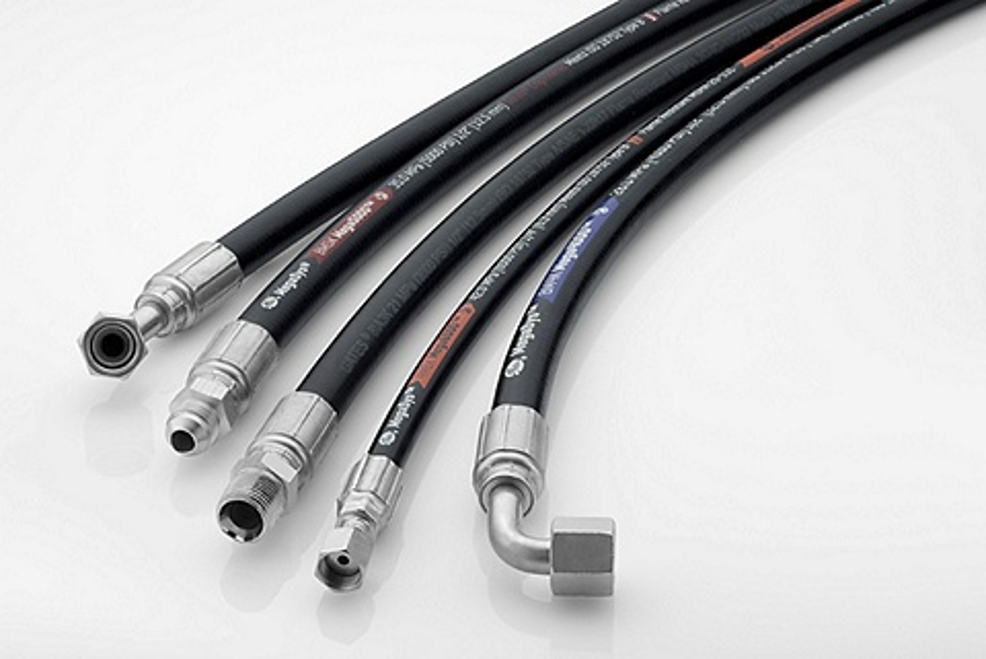In any hydraulic machine, the hoses are key components. While the pumps, actuators, valves, and fluid mechanisms are also central parts of the machinery, they would be unable to perform their roles without appropriate and operational hydraulic hoses. Hoses must be selected correctly because they should be durable enough to tolerate extremes of temperature and strong enough to withstand the movements of highly pressured fluids.
Hoses that are incorrectly chosen are liable to premature failure, which can damage equipment, cause extensive delays to the manufacturing process and inflict serious injury on machinery operatives.
When selecting the correct hydraulic hose for your machinery, make sure you consider these key factors:

System Pressure
System pressure is the single most important factor to consider when choosing a new hydraulic hose. It is imperative that you know the working pressure of the system, including spikes of pressure that could cause stress on incorrect hoses. The flow rate will help you to identify the required diameter of the hose.
Size
The inside diameter of a hose (ID) should be wide enough to allow the fluid to travel through at the required pressure, without a loss of force or excessive heat or instability. Look for the ‘dash sizes’, which increase in increments of 1/16”, at the end of part numbers (e.g. 387TC-6). A dash size of -6 indicates a hose with an inside diameter of 6/16”; -12 indicates a hose with a diameter of 12/16” (or ¾”). Remember, it is also important to ensure you obtain the correctly sized couplings.
Also, the hose’s overall length (OAL) shouldn’t be too short, as this can prevent the hose from stretching and bending under pressure and can cause excessive stress. However, if the hose is too long, it can get snagged on other components or rub against other hoses, causing abrasive wear.
Suitability
A hydraulic hose has several layers for reinforcement, but the internal tube must be able to contact the fluid without becoming damaged. Not all hoses are designed to transport all types of hydraulic fluid, so the type and temperature of the media must be taken into consideration. Similarly, the hose should have compatible couplings with existing hoses and machinery components, to prevent dangerous detachments or leaks.
Temperature
Hoses must be able to tolerate the temperature of the hydraulic fluid and the surrounding environment (the ambient temperature). To choose the correct hose, you’ll need to know the maximum and minimum temperatures of the fluid, and be aware of nearby external sources of heat, such as a manifold, that could damage it. Hydraulic hoses are designed to accommodate different temperature extremes; incorrect selection could lead to early wear or failure.
Safety & Efficiency
Selecting the most appropriate hydraulic hose for your system is essential to ensure a safe and productive manufacturing line. At Hydrastar, we can provide expert professional advice about the different hoses and fittings available and help you choose the right components to keep your production line operating efficiently with minimum downtime. Please get in touch to find out more.


